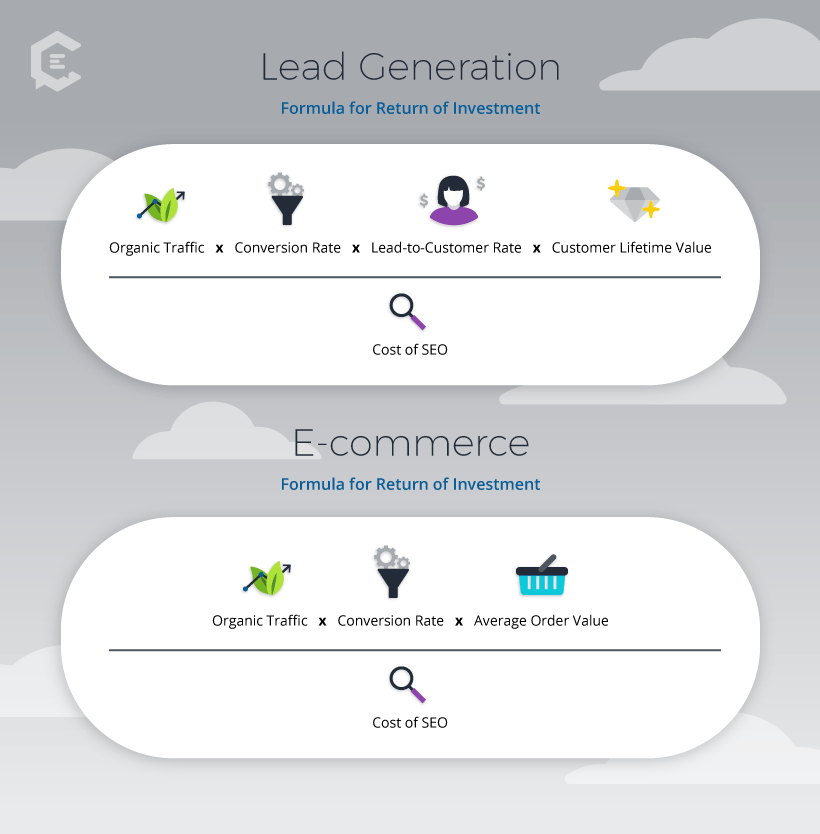For some marketers who feel are defending their marketing efforts, ROI is just one letter short of a four-letter word. Executives want to know what the return on investment is for various marketing activities, but showing ROI isn’t as easy as they think, right?
Well, actually, although tracking and showing ROI may not be your favorite part of the job, the truth is that various tools and tactics are available to us, meaning invoking ROI to defend your marketing efforts is more manageable than you might think.
If ROI is still a dirty word for you, remember this: marketers who embrace showing ROI are the same marketers who executives trust. Showing ROI should always be considered an opportunity to help you accomplish your marketing goals and make it easier for executives to increase your marketing budget. And if trends hold, you are going to need a larger marketing budget just to stay afloat.
According to a 2018 Forrester Research report, marketers in the United States will increase their spending on marketing technology by 27 percent through 2022. Similarly, eMarketer estimates that for the first time ever, digital ad spend will account for more than half of the global ad market in 2019. What does this mean? In a few words: your competitors are spending more — and you need to keep up. No matter the size of your monthly marketing budget, tips and tactics exist to help you be successful. However, if your company seems to never devote quite enough to content marketing, you must do more to defend your efforts with ROI.
To effectively defend your marketing efforts, you need to employ a little storytelling and combine it with a little number-crunching so you can speak to your executives in ways that they will best understand.
Search engine optimization ROI
When you are determining your next search engine optimization-related project, SEO expert Rand Fiskin recommends ensuring you know what the organization’s business needs are right now. According to Fiskin, the best process includes asking, “What are the top-level company and marketing goals overall? What are we trying to accomplish this year — this quarter? And then figure out areas where SEO can best contribute to that work.”
Gathering the data
For best results to defend your SEO efforts, you need to make sure that you and your executives speak the same language. The best way to do this is by standardizing your SEO measurements and not deviating from them. If you do this, when you talk about SEO successes and challenges, you won’t need to redefine terms and measurements.
The formula you use to calculate SEO ROI depends on if you are representing a lead generation site or an e-commerce site. A couple examples of equations include:
- Lead generation: (Organic Traffic x Conversion Rate x Lead-to-Customer Rate x Customer Lifetime Value) / Cost of SEO = ROI
- E-commerce: (Organic Traffic x Conversion Rate x Average Order Value) / Cost of SEO=ROI)
Defending your efforts
Putting yourself in the shoes of the executive or board to whom you need to report SEO efforts is invaluable. Before you push numbers or data, ask yourself which questions your leadership is going to have, then provide answers to those questions. Be clear and deliberate about it. You might even consider delivering results in a Q&A format.
Some of the potential questions that your executive leadership might want answered include:
- Why continue investing in SEO rather than (insert marketing tactic du jour here)?
- What kind of profit (or lead) increase can we expect to see (or did we see) from your efforts? How soon will we see the increase?
- How do we prove results? What does success look like?
Remember that even though you might think the tactics or strategies you are employing are unique and creative, your executives are most focused on results. So focus your efforts on communicating the results you have seen or will see.
Read posts about SEO tools and strategies in the ClearVoice blog.
Social media ROI
If you are like the majority of social media marketers, ROI is your top concern. In fact, according to a Sprout social survey, a full 55 percent of marketers claim that ROI is a top concern for them. Some have questioned in recent years the value of social media. But if you can remind executives that social media is as a delivery mechanism for connecting with consumers and potential consumers, you are on the right track.
Gathering the data
Some argue that metrics such as likes, comments, and shares are insignificant, but these data points do have value in helping social media marketers track if engagement with content is increasing or decreasing. They also allow marketers to compare how users are interacting with you vs. with your competitors.
Other measurements that you can use to track ROI include reach, engagement, traffic to your site, revenue generated, conversions, and leads generated. Of course, not every social post will achieve each of these items. The most important thing you can do is first determine the objective for each social post or campaign, and then measure against that objective.
Check out this handy guide from QuickSprout for some ways you can calculate social media ROI. Just remember, ROI is impossible to define on social media without some clear objectives to start. Also note that social media plays a crucial role in your brand’s reputation management, something that’s more qualitative and harder to translate into ROI.
Defending your efforts
Social media is largely used to show and tell visual stories. So don’t be afraid to incorporate some of the same storytelling techniques when proving social media’s worth to your executive leadership.
Amber Naslund, co-author of “The NOW Revolution,” says that scouring the LinkedIn or Twitter profiles of your executive leadership can give you insight into what they like. Note what sorts of messages resonate with them. This knowledge will help you as you defend your social media marketing efforts.
Naslund also recommends you should keep the following five elements in mind as you communicate with executives:
- Don’t tell your executives about the power of social — show them. Develop a simple listening stream that executives can use to see what is happening on social daily.
- Email your executives a quick social media highlight package once a week. Make it simple and brief; but be consistent.
- Social metrics are fine, but they need to pass the ‘So What’ test. Be prepared to answer why any metric that you use to determine success is actually important.
- Don’t hide the risks — highlight them. Showing you have a grasp of what could go wrong helps build confidence with your leaders.
- Not every trend is worth following. Not every business needs to be on every social channel. Go where your audience is most likely to resonate with your content.
Read posts about social media strategy and tips in the ClearVoice blog.
Email ROI
Perhaps there is no marketing tool more equipped to show ROI than email. According to a McKinsey & Company study, email marketing can be as much as 40 times as effective as social media marketing. Likewise, the study shows that the buying process is three times faster in emails than in social media. Of course, you need to prove these data points in your own organization in order to make an impact with your leadership.
Gathering the data
If calculating semi-complicated math equations isn’t your strong suit, a bevy of tools exist to help you calculate ROI with your email campaigns. So rather than calculating, you can focus on compiling information to feed into the equations.
Some of the important data points these tools need in order to calculate ROI include the following:
- Send volume
- Unique opens
- Unique clicks
- Monthly revenue from email
- Total costs
- Conversion rate
- Net conversion value
Defending your efforts
Before you ask for additional budget or try to show how effective you have been with your existing email marketing budget, you will need to do a little homework first. It’s easy for a chief financial officer or other executive to say “no” to your requests if you aren’t answering the questions he needs answered.
Keep these tips in mind when discussing your email marketing efforts:
- Don’t be afraid to let your executives know that many organizations are increasing the budget for their email marketing campaigns. According to a Litmus survey, nearly half of businesses are increasing their email marketing budget in 2019.
- Remind your executives that email marketing allows you to test different options until you pinpoint what option speaks best to consumers. Show examples of A/B testing you have done (or will do) and explain how testing the results will lead to an increase in meeting business objectives. Read posts about email marketing strategies in the ClearVoice blog.
- Tell about a user experience or two. Sure, executives want to know the bottom line, but that doesn’t mean they don’t have a heart. Create a persona or two and explain what his or her customer journey was and how that journey led to a conversion. Base this story on real-life data. Show how the work you are doing with your email marketing efforts is making a difference in people’s buying decisions.
Not everything comes back to money
Even if you do everything included above, don’t forget that there isn’t always a monetary value associated with SEO, social media, and email marketing efforts. The investment of time, talents, and effort plays a huge role as well. Perhaps Gary Vaynerchuk put it best:
ROI isn’t about the tool, it’s about investing the time and effort to use it correctly. The ‘I’, the investment, isn’t monetary, it’s not about throwing money at something. It’s about investing the hustle into becoming the best. It’s about execution. If you want to make money doing something, you need to be really good at that something in order to see the returns you’re looking for.
So, yes, remember to use data to show the ROI to defend your marketing effort. Just don’t let your leadership forget that a big part of your company’s ROI is you — and the talents, skills, institutional knowledge and know-how you gain from actively seeking ways to market the organization.






